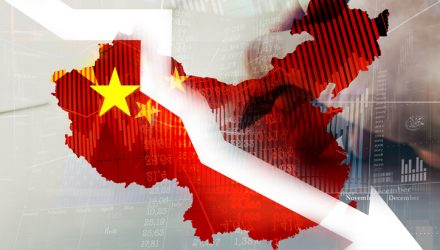There has been plenty of talk about how China ETFs may perform when the COVID-19 virus is officially put to rest, but there are some examples of some of those ETFs displaying strength in a challenging environment.
The KraneShares MSCI All China Health Care Indes ETF (KURE) is a prime example with a gain of almost 6% over the past month. KURE looks to reflect the performance of the MSCI China All Shares Health Care Index, which is comprised of the various China share classes from Chinese companies engaged in the healthcare sector.
As the coronavirus contagion gains more considerable notoriety, Chinese investors have turned to the healthcare segment. U.S. investors can also capitalize on the momentum in Chinese healthcare stocks through this sector-specific China ETF play, KURE. KURE was among the best performing non-leveraged ETFs of the past week after China’s markets reopened, following the extended Lunar New Year holidays.
KURE Call
KURE invests in a variety of publicly traded shares of Chinese issuers, including A-Shares, B-Shares, H-Shares, P-Chips and Red Chips – the portfolio essentially includes companies listed on Mainland China, Hong Kong and the U.S. Furthermore, the Chinese health care companies must be classified under the Global Industry Classification Standard. The index may also include small-, mid- and large-cap companies.
“Given the recent ebullience surrounding KURE, the primary near-term risk for the fund could be a resolution to the coronavirus issue. However, should those headlines emerge, it would likely spark a rally in Chinese assets, taking KURE along for the ride,” according to InvestorPlace.
Looking beyond the virus, healthcare in China is similar to healthcare in the U.S., a defensive sector play that will be in demand no matter the status of the economy. The only difference, when compared to the U.S., is that China’s healthcare market is only just beginning to develop.
“China is the second largest healthcare market globally with total healthcare expenditure reaching $558 billion in 2016, a number projected to reach $1.1 trillion by 2020,” according to KraneShares.
China’s aging population, rising incomes, and increasing urbanization may provide a sustained catalyst for growth in China’s healthcare sector. Additionally, healthcare reform policies enhance the efficiency and quality of medical products. Bottom line: KURE should work over the near-term and it offers plenty of long-term potential, too.
For more on thematic ETFs, please visit our Thematic Investing Channel.
The opinions and forecasts expressed herein are solely those of Tom Lydon, and may not actually come to pass. Information on this site should not be used or construed as an offer to sell, a solicitation of an offer to buy, or a recommendation for any product.

